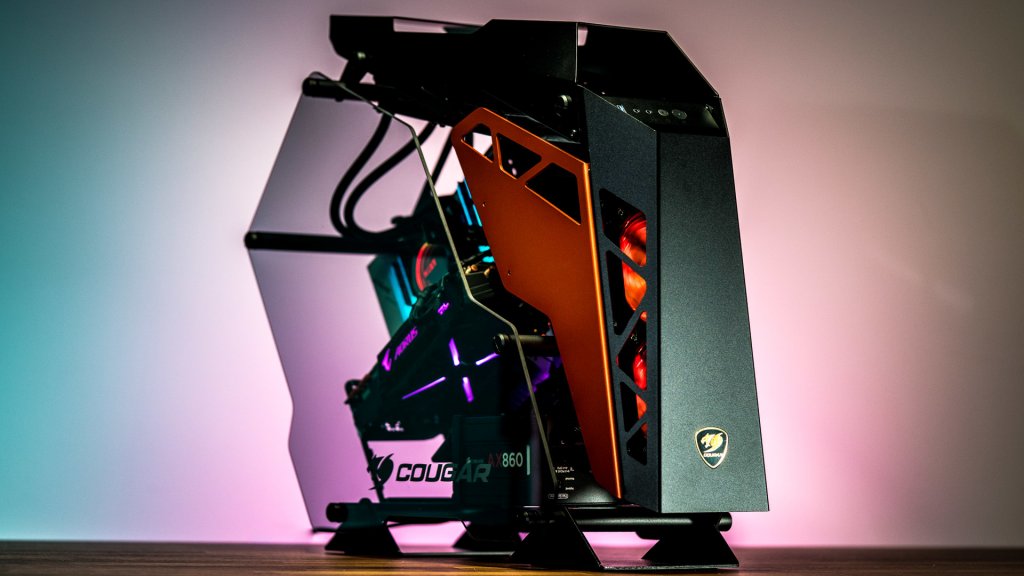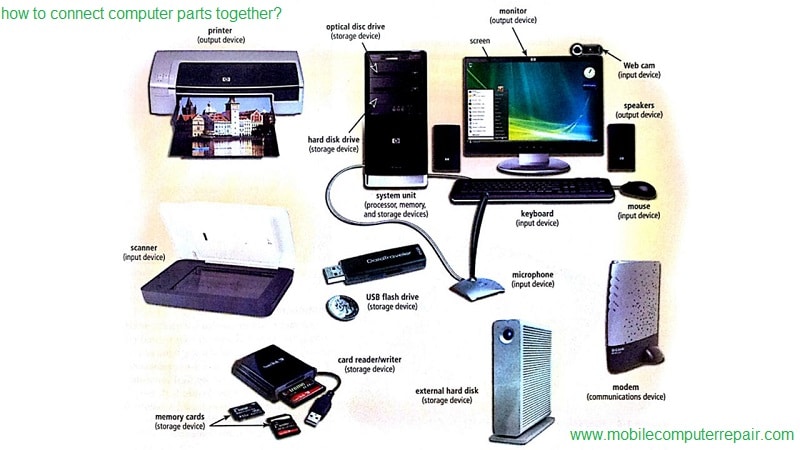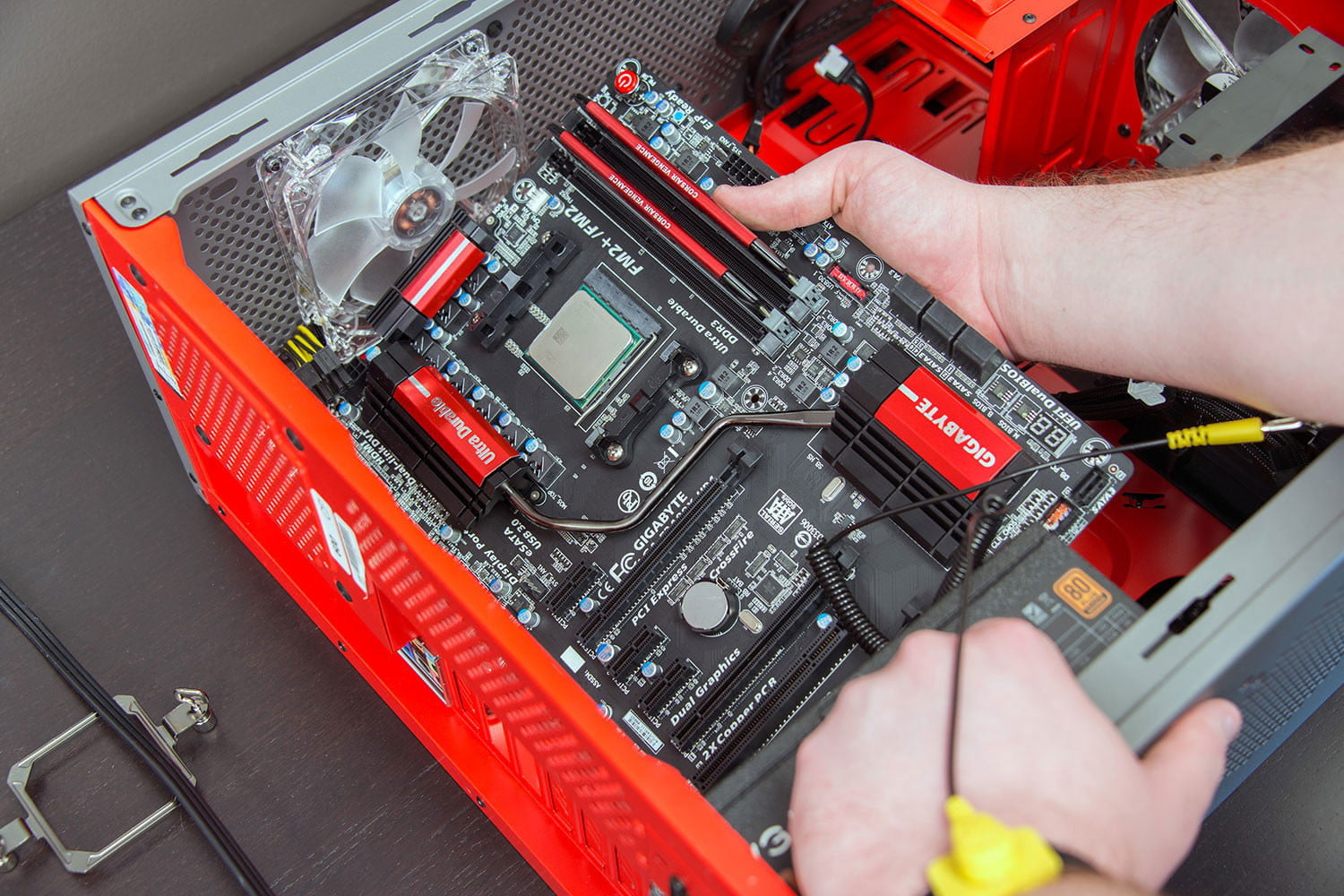Hillary Reviews Tech
The question “How to build my PC for me?” might be intimidating to some people.
Though, the benefits of having a personal computer built by your own hands are tremendous as you can save a lot of money, rather than hiring someone to do that. More importantly, you would know exactly what parts your computer contains, and you can easily customize the settings to meet your needs.
Sounds awesome! But how? Such a tough question, right? That is why we bring you the instructions on this topic today. Keep reading and get the answer yourself.

What Parts Do I Need To Build My PC For Me?
Thinking about what parts are included in a computer is nerve-racking because many people have no idea what they are and how they work.
Well, to build a PC, you obviously need some components. Keep track of the following list and you will get the hang of them at ease.
CPU( Processor)
The Central Processing Unit, also known as the so-called CPU, is considered the brain of your computer. Its function is to translate your orders into a language that other parts of your PC can understand.
Another function of the CPU is to make sure all the parts in your PC work together. On the market, Intel and AMD are the two well-known companies for their CPU.
GPU( Graphics Processing Unit)
GPU is also known as Video Card, which has the most influence on your gaming experience. It allows your PC to perform sophisticated graphics of games and design.
Depending on how much your budget is and what you want, there are many options available, ranging from lower-end to high-end.
RAM( Random Access Memory)
This part is essential for your computer’s short term memory. In terms of RAM, the more it can handle, the better your PC performs. But it does not mean you need too much RAM. Usually, 16GB or 32GB is acceptable.
Motherboard
Motherboard, a part used to connect other parts that make up your PC, is a platform to link communications in your computer.
Typically, the motherboard has to be compatible with the CPU you’ve bought. So, make sure you pick the right one.
Storage
As the name has revealed, storage is where you store your data, such as games, documents, music, and others. There are two types of storage-HDDs and SSDs. HHDs( Hard Disk Drives) were favored in the past. But now, SSDs are more popular as they are faster and more durable.
CPU Cooler
A CPU cooler is known as a system to cool down the CPU when it works. This part must be compatible with the CPU and the motherboard you chose.
PSU( Power Supply Unit)
PSU, as guessed by its name, is a system to provide your PC with the power to function. PSU is so simply built that most people often ignore the roles it plays on the computer.
If there is no PSU on your computer, your PC is just a disabled combination of metal and plastic.
Operating System
OS, or operating system, is a software that enables you to communicate with your PC. Once you have installed the OS in your storage device, you can start downloading programs, games, apps, or whatever you want on your PC.
The most popular OS is Microsoft Windows, as it is user-friendly, legitimate, and compatible with almost all computers.
Case
This accessory is one of your computer’s most customizable parts, as you can choose many variations in terms of shape and size.
Although there are many brands producing cases, their products are roughly similar considering components and configurations.
Monitor, Mouse, and Keyboard
In terms of the monitor, there are tons of options for you. You can choose the entry-level 1920×1080, or the higher resolutions( 2540×1440 monitor or even 3840×2160 (4K) monitor).
Mouse is another by-product you should notice. On the market, there are two types of mouse- wired and wireless for you to pick.
If you are a gamer, you probably go for a mouse with mappable buttons.
To choose the right mouse, make sure that you feel comfortable when you hold it.
The last part of assembling your PC is the keyboard. You would be spoiled for choice when it comes to picking a keyboard as the options are numerous, depending on what you ask for. A wired or wireless keyboard? How important is the keyboard’s lighting? Etc.

How To Put The Parts Together
Install The CPU
Take the CPU out of the box and look at the CPU socket on your motherboard( Upper-left corner of almost motherboard models ).
You will see an arrow sign on the CPU. Arrange this arrow sign to make it fit with the one on the socket and insert the CPU onto the socket. At this time, you can level down the retention lever and gently force it to its original place.
Install CPU Cooler
There are various types of CPU coolers on the market. Hence, for accurate instructions, we recommend reading the manual packed with each type of CPU cooler.
You should take notice that some coolers come with pre-applied thermal paste, but some do not. If the thermal paste is not available on your CPU, you need to apply it before seating the CPU cooler.
But how to apply thermal paste?- You may wonder. To get this job done, just put a small dot onto the center of the CPU. Then, seat the cooler on the CPU and let the pressure do the spreading part.
Install RAM
Find out the number of RAM slots your motherboard contains (normally either two or four). If you want to use all slots, just attach the RAM into place. Look to the RAM manual to make sure you’re installing the right way when you do not fill all of the RAM slots.
Mounting PSU
Firstly, take a look at your case to see where PSU lies. Then, depending on your case’s configuration, you can mount PSU so that its fan is facing outside the case( through a vent at the back of the case) or upside down( via a vent at the bottom of the case)
After that, use the four screws to attach the PSU to the case and you’re done.
Install Motherboard
This step is easy to handle. First, use a screwdriver- attach the first screw and the center to keep the motherboard in the place. Then, step by step mount the rest of the screws into the motherboard.
The number of screws will be hinged on the board. So make sure you know all available holes.
After screwing, link the motherboard with the PSU.

Motherboard Installation
Install GPU
Locate the PCIe* x16 slot- the longest PCIe* slot, which has different colors from other slots.
The final task is to take out the GPU and carefully arrange it into the PCIe*slot. Once you insert the GPU, screw it to the back of the case firmly.
Install Storage
Storage generally takes two forms- 2.5-inch(HDDs and SSDs) and 3.5-inch( HDDs)
Most 3.5-inch bays support 2.5-inch drives but only a few 2.5-inch bays are compatible with 3.5-inch drives.
If you have a free-tool bay, open the switch and pull the tray out. Insert your drive in the tray and close it till you hear a click.
In case you don’t have tool-free bays, there is a metal bracket with slats in it. To attach your drive in one of these “slats”, slide the drive between the side of your case and the metal bracket, then screw it into place.
Once you place your drives completely, link them to the motherboard and the power supply using SATA cable.
Install Operating System
Now is the time to set up your operating system. First of all, download the installer on your flash drive and plug it to your computer.
Then you’ll see a screen that guides you to the system setup( BIOS). You should find a page showing the PC’s system information and make sure the system acknowledges what you have downloaded.
Then find the Boot page( Boot Priority or Boot Order) to alter the boot position so that your flash drive stays in the first order, and the drive on which you wish to install your OS is second.
Then keep following the instructions to complete the installation.
Set Up Monitor, Mouse, And Keyboard And Check It Up
This is the easiest part of building up your PC; you should find all the plugs in the case that match with these accessories. In case you use wireless devices, remember to insert the signal receiver into your case.
And now, it’s time to relax because you’re done! The final step is to start your computer to check if it works.
Conclusion
Hopefully, this article has provided you with the answer to the question “How to build my PC for me?” The instructions, seemingly intimidating at first, are easy to follow as long as you keep the manual instructions by your side.
And if you fail to build up your PC, do it again, and we are sure you’ll make it.


